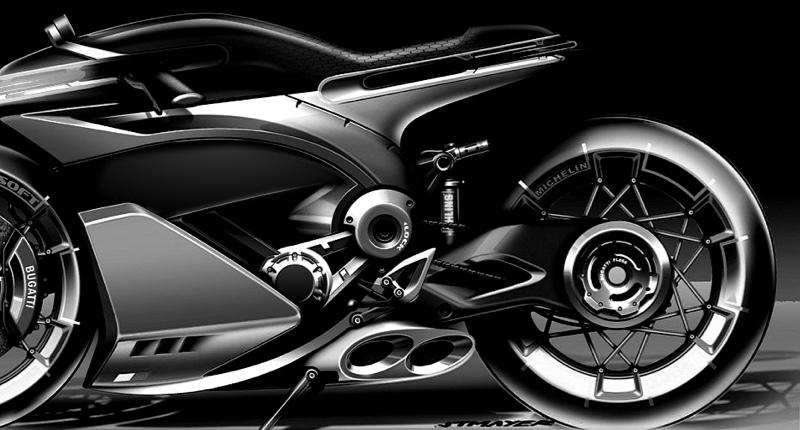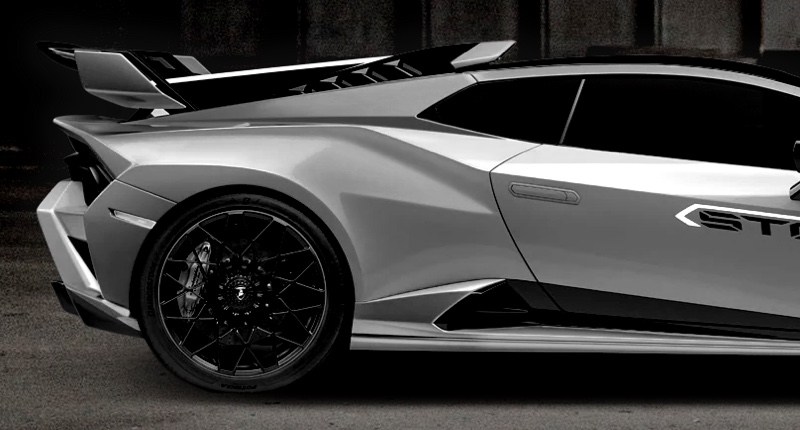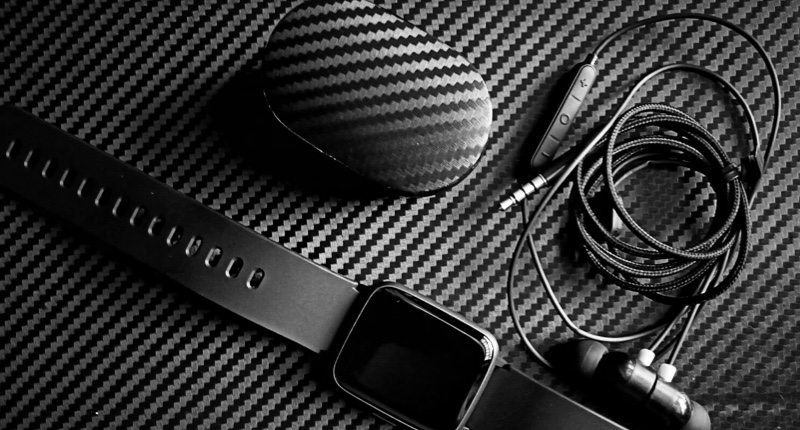How to Choose Custom Carbon Fiber Parts for Your Car
- How to Choose Custom Carbon Fiber Parts for Your Car
- Introduction: What this guide will do for you
- Why choose carbon fiber for automotive parts?
- Performance and aesthetic benefits in plain terms
- Define your objective: appearance, weight, or performance?
- Match the part to your primary goal
- Understand materials and weaves
- Fiber types, weaves and resin systems affect cost and performance
- Manufacturing methods: pros and cons
- Compare wet layup, prepreg/autoclave, and RTM
- Cost and lead time: realistic expectations
- Typical price ranges and what affects them
- Comparison table: manufacturing methods, cost, strength and finish
- Quick side-by-side comparison to guide decisions
- Fitment, tolerances and testing
- Why fitment matters and how to verify it
- Finish options and UV resistance
- Protecting appearance and longevity
- Supplier checklist: what to ask before ordering
- Questions to screen manufacturers and avoid surprises
- Why choose Supreem Carbon for custom parts?
- Supreem Carbon capabilities and credentials
- Installation and maintenance tips
- Best practices for safe install and long life
- Environmental and regulatory considerations
- Road legality and recyclability basics
- Conclusion: a step-by-step buying checklist
- Simple action steps to choose the right part
- Frequently Asked Questions
- Sources and references
How to Choose Custom Carbon Fiber Parts for Your Car
Introduction: What this guide will do for you
If you're searching for How to Choose Custom Carbon Fiber Parts for Your Car, you want reliable, practical guidance that balances looks, performance and budget. This guide helps you define goals, compare materials and manufacturing methods, evaluate suppliers, estimate cost and lead time, and plan installation and care. It targets car owners, tuners, and shop managers looking for aftermarket or bespoke carbon fiber upgrades.
Why choose carbon fiber for automotive parts?
Performance and aesthetic benefits in plain terms
Carbon fiber offers a high strength-to-weight ratio and distinctive woven appearance. Typical density of carbon fiber composites is about 1.6 g/cm3 versus steel at 7.85 g/cm3, enabling part weight reductions often in the 30–50% range for body panels and higher for components designed specifically for light-weighting. The visual twill or gloss finish also makes it a popular choice for aesthetic upgrades.
Define your objective: appearance, weight, or performance?
Match the part to your primary goal
Before you buy, decide whether the part is primarily for appearance, weight savings, or structural/performance gains. Cosmetic components (mirror caps, trunk lids, interior trim) can use thinner layups and lower-cost processes. Structural or aerodynamic parts (splitters, wings, chassis braces) require higher-spec fibers, stronger resins and certified manufacturing methods.
Understand materials and weaves
Fiber types, weaves and resin systems affect cost and performance
Common fiber grades include T300/T700 (automotive-grade performance). Resin systems range from general-purpose epoxy to high-temperature epoxies for motorsport. Weave patterns—plain, twill, and unidirectional (UD)—impact appearance and directional strength. Choose material matched to intended use: UD for directional stiffness, twill for visual appeal, and higher-grade fiber for structural needs.
Manufacturing methods: pros and cons
Compare wet layup, prepreg/autoclave, and RTM
Manufacturing method determines part quality, repeatability and price. Wet layup is economical for simple cosmetic parts; prepreg with autoclave curing yields superior fiber volume and strength but is costlier; Resin Transfer Molding (RTM) is efficient for medium volumes with good surface finish. Ask your supplier which method they use and why it suits the part.
Cost and lead time: realistic expectations
Typical price ranges and what affects them
Custom carbon fiber parts vary widely in price. Small cosmetic items may start at $150–$500, while large structural or limited-run components can range from $1,000 to $5,000+ each. Factors that influence cost include material grade, manufacturing method, tooling complexity, finish (clearcoat, paint prep), and order quantity. Lead time typically ranges from 2–8 weeks for common parts and longer for fully custom, tool-dependent runs.
Comparison table: manufacturing methods, cost, strength and finish
Quick side-by-side comparison to guide decisions
| Method | Typical Cost | Typical Strength/Quality | Finish | Best Use |
|---|---|---|---|---|
| Wet Layup / Hand Layup | Low | Moderate, variable | Matte to gloss with post-clearcoat | Cosmetic panels, prototypes |
| Prepreg + Autoclave | High | Very high, consistent | Excellent; factory-quality | Structural parts, high-performance aero |
| RTM (Resin Transfer Molding) | Medium to High | High, good repeatability | Very good, low post-processing | Medium-volume production |
Fitment, tolerances and testing
Why fitment matters and how to verify it
Proper fitment prevents rattles, aerodynamic issues, and safety problems. Ask for test-fit images or CAD files, and request tolerance specs. For structural parts, request mechanical testing data (tensile or flexural tests) or supplier quality documentation. Well-documented fitment data reduces installation time and returns.
Finish options and UV resistance
Protecting appearance and longevity
Clearcoat protects carbon fiber and provides glossy finish; UV-stable clearcoats and proper sanding/polishing improve longevity. For matte looks, matte clearcoats exist but can be harder to maintain. If your car sees harsh sun, choose UV-resistant resin systems and ask whether the supplier uses UV inhibitors.
Supplier checklist: what to ask before ordering
Questions to screen manufacturers and avoid surprises
Ask suppliers about: material grades (e.g., T700), manufacturing method, quality certifications (ISO9001 or similar), sample or photos of past work, warranty and return policy, lead time, tooling fees, packaging and shipping methods, and after-sales support. Request a written quote that itemizes costs to avoid hidden fees.
Why choose Supreem Carbon for custom parts?
Supreem Carbon capabilities and credentials
Supreem Carbon, established in 2017, integrates R&D, design, production and sales for customized carbon fiber parts for cars and motorcycles. With a 4,500 m2 factory, 45 technical staff, annual output value around $4M, and over 1,000 products (500+ customized parts), Supreem Carbon provides experienced project management, prototyping and scalable production—suitable whether you need a single custom piece or a small production run.
Installation and maintenance tips
Best practices for safe install and long life
Install with correct hardware and adhesive (use recommended torque specs), and avoid over-tightening to prevent cracking. For maintenance, wash with mild detergents, avoid abrasive polishes on clearcoats, and periodically inspect for delamination or edge damage. Small chips can be repaired; discuss repairability with your supplier before purchase.
Environmental and regulatory considerations
Road legality and recyclability basics
Most aftermarket carbon fiber body parts are legal for street use, but check local regulations for structural components or parts affecting pedestrian safety. Carbon fiber is more difficult to recycle than metals; some regions have composite recycling programs, and manufacturers are increasingly exploring reclaimed fiber solutions.
Conclusion: a step-by-step buying checklist
Simple action steps to choose the right part
1) Define primary objective (looks, weight, performance). 2) Select appropriate materials and weave for that objective. 3) Choose manufacturing method that balances quality and budget. 4) Verify fitment, tolerances, and request test-fit or CAD. 5) Evaluate supplier credentials, warranty and lead time. 6) Plan installation and aftercare. Following these steps answers the core question: How to Choose Custom Carbon Fiber Parts for Your Car—by matching requirements to materials, processes and trusted suppliers.
Frequently Asked Questions
What is the typical weight savings from carbon fiber parts?Weight savings depend on the original material and part design. For exterior body panels you'll commonly see 30–50% reduction versus steel; compared with aluminum it's typically 10–30%. Actual savings vary by part geometry and thickness.
Are custom carbon fiber parts durable for daily driving?Yes—when manufactured with proper materials and methods. Structural or load-bearing parts should use prepreg/autoclave or proven RTM processes. Cosmetic items produced by wet layup can last for daily use if properly finished and maintained.
How much should I expect to pay for a custom carbon fiber part?Small cosmetic items may start near $150–$500. Large or structural custom pieces often range from $1,000 to $5,000+. Tooling, materials, and low production quantities increase cost.
Can I install carbon fiber parts myself?Some items (mirror caps, trim) are DIY-friendly. Larger parts (hoods, bumpers) typically need a shop for safe fitting and alignment. Follow manufacturer installation instructions and torque specs.
How do I verify a supplier's quality?Request material specs (fiber grade), photos of past work, manufacturing method, quality certificates, mechanical test results for structural parts, and references. A clear warranty and return policy are also indicators of professional practice.
How do I care for carbon fiber finishes?Wash with mild soap, avoid abrasive compounds on clearcoats, use UV-stable waxes or sealants for protection, and repair chips promptly to avoid moisture ingress.
Sources and references
- Supreem Carbon company data and product catalog (company-provided figures: factory size, staff, annual output, product count)
- CompositesWorld – articles on automotive composites and manufacturing methods
- MatWeb material property database – carbon fiber composites and resin system properties
- SAE International – technical papers on composite performance and automotive applications
- Industry reports on lightweighting trends and aftermarket carbon fiber pricing benchmarks
Tips for Wholesale carbon fiber material for cars
Advanced Carbon Fiber Aero Parts - Precision & Performance | Supreem Carbon
Custom carbon fiber composite Manufacturers and suppliers
Custom best motorcycle carbon fiber parts Manufacturers and suppliers
For Carbon Fiber Material
What are the advantages of carbon fiber?
High Strength-to-Weight Ratio
It is stronger than many traditional materials, such as steel and aluminum.This high strength-to-weight ratio allows for the creation of lightweight components that maintain structural integrity and durability.
Lightweight
One of the most significant advantages of carbon fiber is its low density, contributing to lightweight structures. This property is particularly crucial in industries where weight reduction is a priority, such as aerospace, automotive, and sports equipment.
Resistant to corrosion and chemicals
Carbon fiber is inherently resistant to corrosion, making it an ideal material for applications exposed to harsh environments or corrosive substances. This property contributes to the longevity of components and reduces maintenance requirements. Carbon fiber has good chemical resistance, making it suitable for use in environments where exposure to chemicals or harsh solvents is a concern. This resistance enhances the material's durability in various industrial settings.
Tolerant of high temperature
Carbon fiber exhibits excellent thermal stability and resistance to high temperatures. This makes it suitable for applications where components are exposed to elevated temperatures, such as in the aerospace and automotive industries.
Low thermal expansion
Carbon fiber has a low coefficient of thermal expansion, meaning it expands or contracts minimally with changes in temperature. This property contributes to dimensional stability, making carbon fiber components reliable in varying temperature conditions.
Aesthetic Appeal
Carbon fiber has a modern and high-tech appearance, contributing to its aesthetic appeal. This property is leveraged in consumer goods, automotive components, and sporting equipment where visual appeal is important.
For Products
How can I get some sample?
Actually we dont provide the free sample to customer, you can place a sample order if need some parts.
What is main products for factory?
Supreem carbon mainly produce carbon fiber custom products for automobile and motorcycle accessaries, including the design, develop and manufacturing of appearance parts, interior parts, functional parts, etc. Other carbon fiber custom goods also can produce for you.
For Customized Service
What is the customization process of carbon fiber products?
1. Customer provide 3D drawing, design requirement or idea
2. Technician evaluate project feasibility and provide a quotation
3. Project confirmation and arrange sample production
4. Delivery and customer feedback
5. Big scale orders production
For Order Delivery
What is the shipping time for the different ways?
Express delivery 5-7 days.
20-25 days by sea.
15 days by air.

Yamaha R1 Carbon Fiber Side Fairings
Introducing the Supreem Carbon Fiber Long Side Panels for Yamaha R1. Crafted with precision and expertise, this front side fairing is designed to elevate the performance and aesthetics of your R1. Made from high-quality carbon fiber, this fairing is not only lightweight but also incredibly durable, providing optimal protection for your motorcycle.

Yamaha R1 Carbon Fiber Airbox Tank Cover
The Supreem Carbon Yamaha R1 Carbon Fiber Airbox Tank Cover provides lightweight, durable protection with a sleek finish. Designed for R1 models, it enhances the style and performance of your bike. Its lightweight structure improves performance while maintaining the premium aesthetics necessary for high-end modification projects. As a dedicated manufacturer of carbon fiber parts, we provide stable production capacity, customization options, and strict quality control to support enterprise-level procurement and OEM/ODM needs.

Carbon Fiber Rear Seat Panel for BMW S1000R & M1000RR – Lightweight Performance
This carbon fiber rear seat panel is engineered for the BMW S1000R and M1000RR, offering superior rigidity, reduced weight, and a premium racing finish. Produced with autoclave technology and strict QC standards, the part ensures consistent OEM-level fitment. Supreem Carbon provides wholesale supply, stable bulk production, and customized solutions for global clients.

High-Performance Carbon Fiber Rear Undertail for BMW S1000R
Engineered for distributors, tuning brands, and motorcycle accessory businesses, the BMW S1000R Carbon Fiber Rear Undertail is a high-quality, durable, lightweight carbon fiber upgrade for the S1000R platform. This component is manufactured using aerospace-grade carbon fiber and precision molds to deliver superior stiffness, a seamless OEM-level fit, and a premium visual finish suitable for high-end aftermarket applications.
© 2024 Supreem Carbon All Rights Reserved.





Facebook
Pinterest
LinkedIn
Instagram